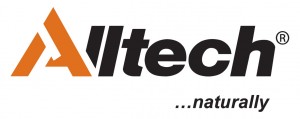Posted: 15th August 2013 | Back to news feed

Mycotoxin poisoning is a problem that many horse owners are unaware of, and while not wanting to cause unnecessary worry there are simple steps that every horse owner can take to reduce their horses exposure.
Invisible to the naked eye, mycotoxins are toxic chemicals produced by some types of mould growth under certain environmental conditions.
The difficulty facing horse owners is that not all moulds produce mycotoxins and the ones that do can die off leaving no visible trace of contamination.
Our horses are exposed to mycotoxins through contaminated feed and forage.
Mycotoxin poisoning has the potential to suppress the immune system and cause a wide range of conditions, ranging from sub-clinical symptoms, such as general lack of form, hypersensitivity and loss of well-being, through to possible liver damage.
Long term exposure to mycotoxins can, therefore, prove debilitating and leave the horse vulnerable to sickness or disease
High risk groups include those whose immune system may already be under pressure, including youngstock, broodmares, veterans, performance horses, poor doers or sick and convalescing horses.
Horse owners can significantly reduce their horse’s exposure to mycotoxins by following these simple rules:
1. Always use good quality feed and forage from a reputable source.
2. Store feed in a cool dry place that is rodent proof.
3. Check sell-by dates when buying feed and try and choose the freshest bag
available and never feed beyond the sell-by date.
4. Big bales of haylage should be well wrapped with a least eight layers of plastic
and open bales should be used within two to three days.
5. Mycotoxins occur in damp, humid and drought conditions and are more prevalent
in mature crops, so hay is more prone to a higher level of contamination than
haylage. Be aware of harvesting conditions and check that hay is or was fully dry
before baling.
6. Store hay in a dry, well ventilated environment.
7. Practice good hygiene and keep feed, water buckets and feed bins clean.
8. Keep bedding fresh and clean as bedding is fast becoming noted as a potentially
significant source of mycotoxin toxicity, and some believe that contaminated
straw may cause allergic skin reactions.
9. Listen to your horse, if he suddenly stops eating his hay or haylage it may be
contaminated, as some horses are intuitive to the presence of mycotoxins.
10. Feed a balanced diet with good levels of antioxidant vitamins (A, C & E),
prebiotics and yeast cultures to promote good health and boost the immune
system.
So, the next time you open a bale of hay with a patch of mould on it and still use it believing it to be ok on the basis your horse doesn’t have a cough or fail to wash out your feed buckets thoroughly, you may think twice.
Lifeforce Elite the supplement from Alltech, the experts in equine digestive health, contains a mycotoxin binder, that acts as a binding agent for up to 37 different mycotoxins helping to prevent them from being absorbed into the horses gut.
Alltech are title sponsor of the Alltech FEI World Equestrian Games™ 2014 in Normandy, France. The Lifeforce range is the cornerstone of the Alltech Equine Advantage series, developed to benefit horses at every stage of life, from breeding stock to pleasure and performance animals.
For further information please visit www.lifeforcehorse.com or telephone 01780 764512
The Equestrian Index newsfeed is compiled from articles submitted by advertising members and expresses the opinions of those members. Watsons Directories Ltd shall not be held liable for any inaccuracies or mis-statements therein.
